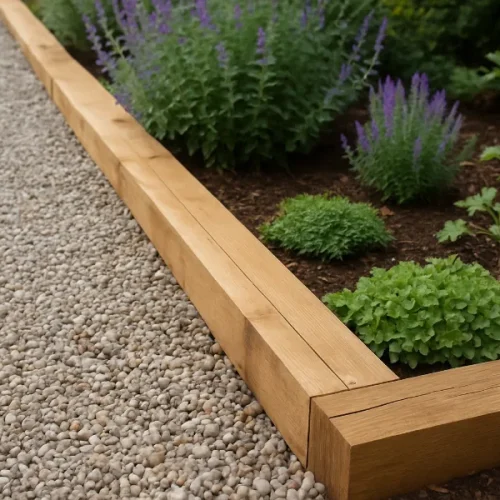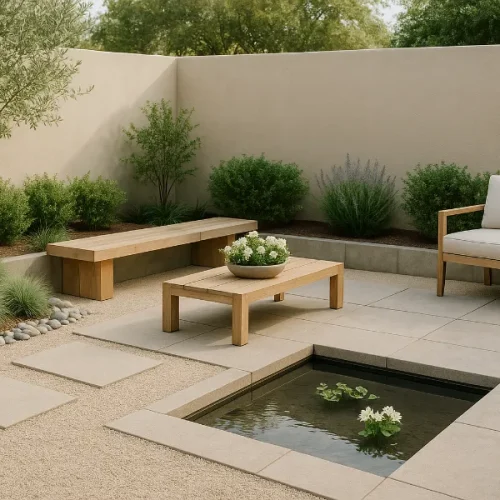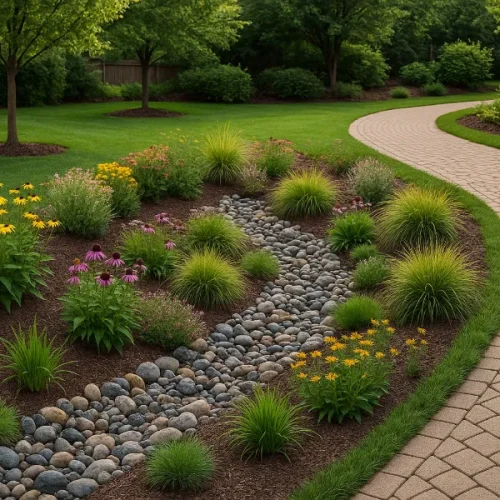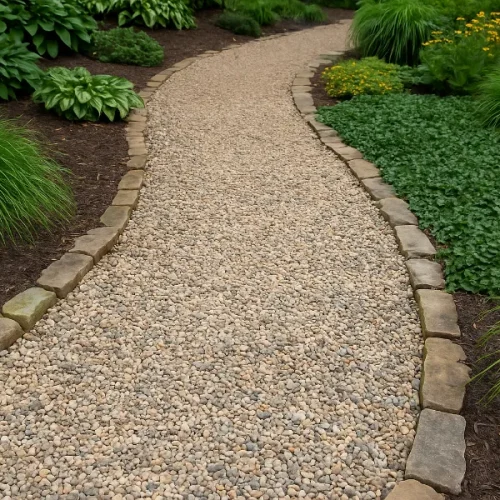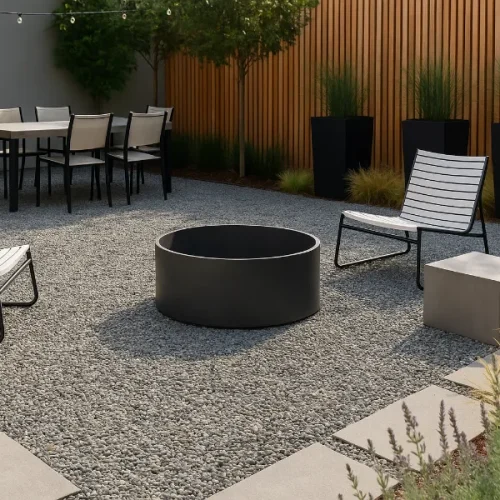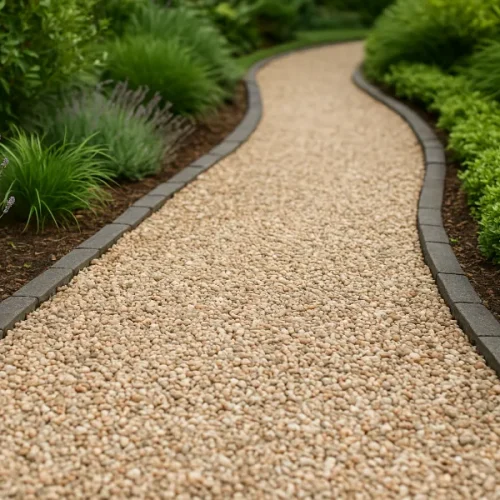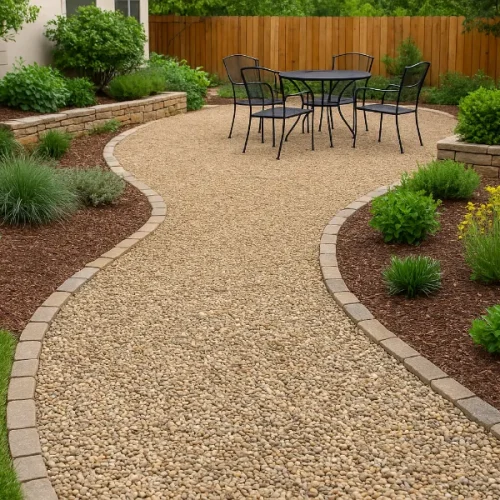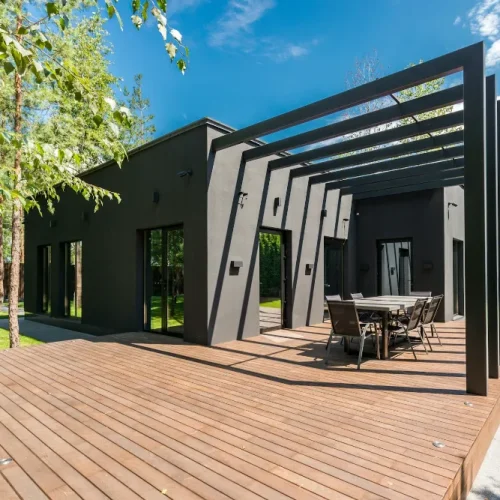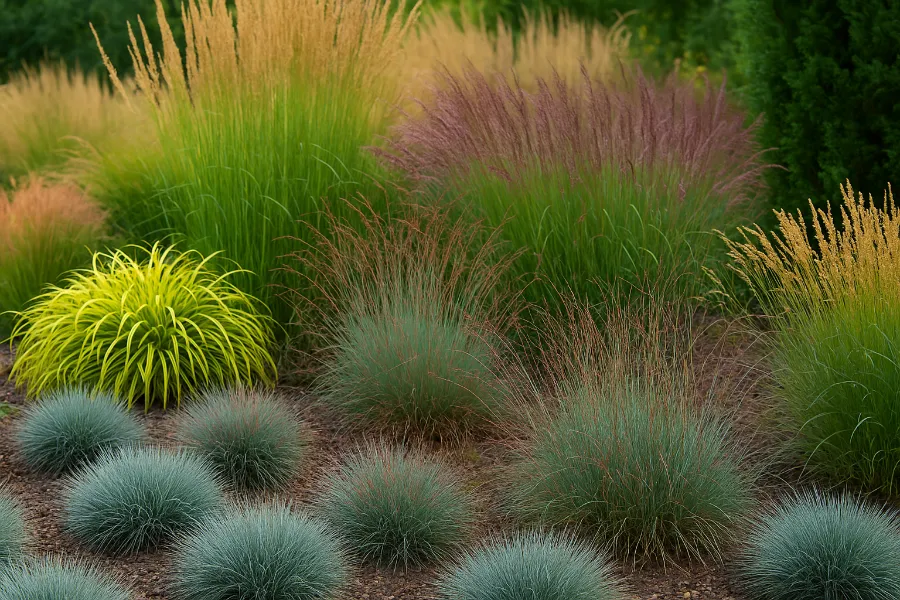
Landscaping doesn’t need to be complicated to be beautiful. In fact, some of the most striking, texture-rich, and visually dynamic landscapes rely on plants that practically take care of themselves. Ornamental grasses are among the most beloved of these easygoing plants. They sway with the breeze, offer seasonal interest, and require far less attention than many flowering shrubs or perennials. Whether your yard is sun-drenched, shaded, wet, or drought-prone, there is an ornamental grass that fits the space perfectly.
This guide will explore why ornamental grasses are such excellent choices for low-maintenance landscaping, highlight some of the best varieties for different climates and design goals, and offer practical tips for planting and care. By the end, you’ll see how grasses can create movement, dimension, softness, and structure, all while reducing the time you spend maintaining your yard.
Why Choose Ornamental Grasses?
Ornamental grasses are more than background fillers. They can define a landscape’s mood and visual flow. Unlike many blooming plants that peak for just a few weeks, grasses evolve gracefully across the seasons. They emerge fresh and green in spring, grow lush and full in summer, and turn golden, tawny, or bronze in fall. Even in winter, their dried seed heads and arching blades bring subtle texture against snow, stone, or evergreen plantings.
But beauty isn’t the only reason homeowners and landscape designers rely on grasses:
1. Minimal Water Needs
Many ornamental grasses are drought-tolerant once established. This makes them particularly appealing for regions with water restrictions or hot summers.
2. Little to No Fertilizer
Unlike lawns or high-maintenance perennials, most grasses thrive in average soil without added fertilization.
3. Low Pest and Disease Risk
Grasses rarely suffer from the pests and fungal issues that plague roses, hydrangeas, or fruit trees.
4. Natural Weed Suppression
As grasses mature, they create dense root systems and leaf canopies that block out weeds.
5. Wildlife Friendly
Birds use seeds for food, and the foliage offers shelter to beneficial pollinators.
6. Strong Architectural Form
Grasses provide height, movement, and contrast where landscapes feel “flat” or static.
This combination of resilience, practicality, and beauty makes ornamental grasses stand out in modern sustainable landscapes.
Design Principles for Using Ornamental Grasses
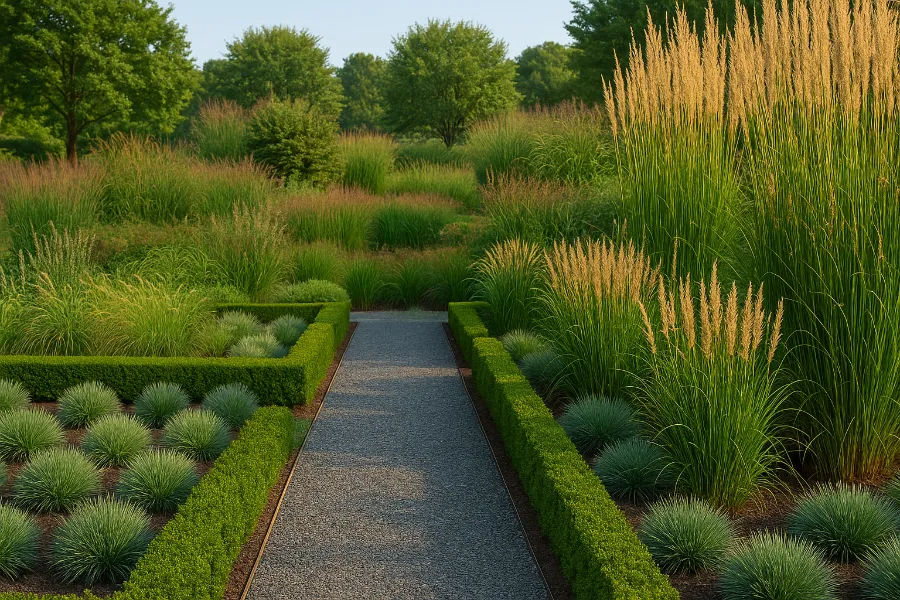
Before diving into plant choices, it’s helpful to consider how grasses fit into the larger composition of a yard.
Use Grasses as Texture Contrast
If your landscape is full of broad-leaf shrubs or solid evergreen forms, grasses break up the visual heaviness. Their fine, flowing textures soften boundaries and structures.
Create Repetition for Cohesion
One ornamental grass planted alone can feel random. Three, five, or more of the same variety creates a unified, intentional look.
Take Advantage of Movement
Grasses interact with the wind in a way few plants do. Placing them where breezes move across the yard enhances their effect. Near walkways, their rustling sound adds subtle sensory presence.
Highlight Seasonal Transitions
Choose grasses that look beautiful even in their dormant forms. Some varieties stand tall and crisp through winter, offering sculptural silhouettes when the rest of the garden is bare.
Pair Grasses With Hard Materials
Gravel, stone, pavers, and decorative edging all provide strong structure that balances the airy nature of grasses.
Top Low-Maintenance Ornamental Grasses to Consider
Below are some of the most dependable grasses suited for different regions and preferences. All are hardy, adaptable, and require minimal care once established.
1. Feather Reed Grass (Calamagrostis acutiflora ‘Karl Foerster’)
This is one of the most popular ornamental grasses in modern landscaping. Known for its tall, upright form, it grows in a narrow clump that makes it ideal for tight spaces, borders, and architectural planting.
- Height: 4 to 6 feet
- Light: Full sun to partial shade
- Water: Moderate but drought-tolerant once established
- Best Feature: Bold vertical plumes that last through winter
It remains tidy and doesn’t flop, making it ideal for contemporary and formal landscapes.
2. Switchgrass (Panicum virgatum)
This North American native is tough, hardy, and thrives in poor soils. It comes in many varieties that offer blue-green, pink-tinged, or even deep burgundy foliage.
- Height: 3 to 7 feet depending on variety
- Light: Full sun
- Water: Moderate to dry
- Best Feature: Airy flower heads that glow in backlighting
Switchgrass is excellent for prairie-inspired, meadowy yard designs.
3. Blue Fescue (Festuca glauca)
This compact, tufted grass is valued for its striking powder-blue color. It’s best used as a border plant, filler, or groundcover.
- Height: 8 to 12 inches
- Light: Full sun
- Water: Low, very drought-tolerant
- Best Feature: Cool-toned color that pairs beautifully with warm stone and gravel
Low-growing and extremely low-maintenance, blue fescue is ideal for xeriscapes.
4. Maiden Grass (Miscanthus sinensis ‘Gracillimus’ and others)
Maiden grass is beloved for its soft arching shape and delicate, shimmering plumes. It’s larger than many grasses, making it a strong visual anchor in a landscape.
- Height: 4 to 8 feet
- Light: Full sun
- Water: Moderate
- Best Feature: Elegant fountain-like form
Note: In some regions, Miscanthus species can spread aggressively. Choose non-invasive or sterile cultivars where needed.
5. Little Bluestem (Schizachyrium scoparium)
Another native prairie grass, Little Bluestem offers year-round beauty with minimal input. Its foliage shifts from blue-green in summer to deep red-bronze in fall.
- Height: 2 to 4 feet
- Light: Full sun
- Water: Dry to moderate
- Best Feature: Incredible fall color and winter structure
It excels in naturalistic or wild-style landscapes.
6. Japanese Forest Grass (Hakonechloa macra ‘Aureola’)
Unlike most ornamental grasses, this variety thrives in shade. It has a cascading, layered form that resembles flowing water.
- Height: 1 to 2 feet
- Light: Partial to full shade
- Water: Consistent moisture preferred
- Best Feature: Bright golden foliage that lights up dim corners
It is perfect for woodland paths, shaded courtyards, and under trees.
7. Purple Fountain Grass (Pennisetum setaceum ‘Rubrum’)
This grass is celebrated for its rich burgundy foliage and soft, bottlebrush plumes. It thrives in warm climates.
- Height: 3 to 5 feet
- Light: Full sun
- Water: Moderate
- Best Feature: Dramatic color and movement
In cooler climates, it is grown as an annual or overwintered indoors.
Planting and Care Tips for Long-Term Success
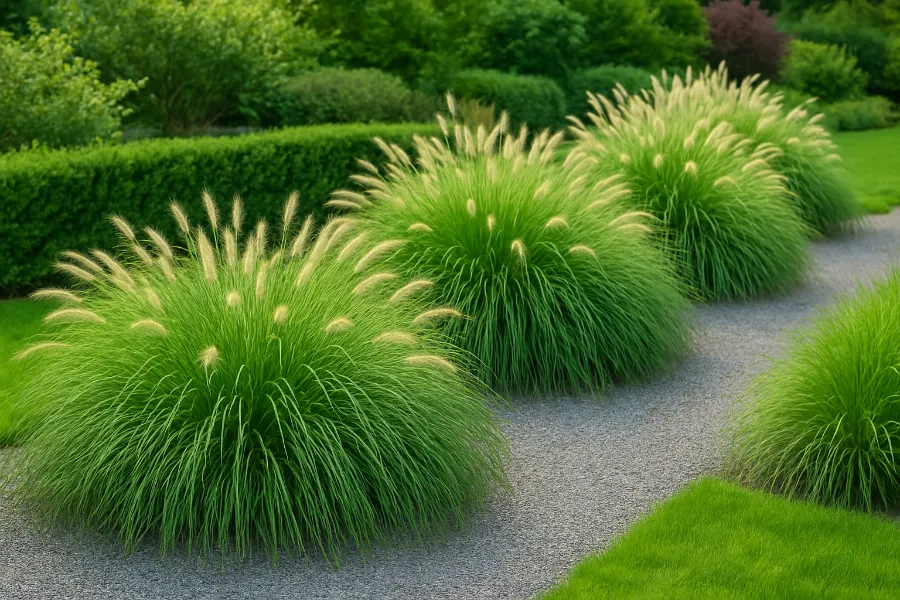
One of the reasons ornamental grasses are so low-maintenance is that they do not demand meticulous care. However, a few thoughtful steps during planting will ensure they thrive from the start.
Soil Preparation
Most grasses prefer well-draining soil. If your soil is heavy clay, amend with compost or gravel to improve drainage.
Planting Time
The best time to plant ornamental grasses is spring or fall. Warm season grasses (like switchgrass and bluestem) grow most actively in summer but should still be planted early enough to establish roots.
Spacing
Give grasses room to form their natural shape. Crowding reduces airflow and can lead to flattening or patchiness.
Watering
Water regularly during the first growing season. After the first year, most grasses require only occasional watering, depending on climate.
Pruning
Do not cut grasses back in fall. Leave the seed heads and stems for winter interest and wildlife benefit. Cut back in late winter or early spring before new growth appears.
Dividing
Every few years, clumping grasses may become crowded. Dividing them in spring revitalizes growth and provides new plants.
Landscaping Ideas Using Ornamental Grasses
1. Border Edging
Low grasses like blue fescue or dwarf fountain grass make soft, flowing borders along paths and patios.
2. Windbreak or Privacy Screen
Tall varieties like maiden grass and switchgrass can create natural screens that sway instead of feeling stiff and solid.
3. Accent Planting
A single dramatic grass placed in a stone courtyard or beside a water feature can serve as a living sculpture.
4. Meadow-Style Planting
Combine native grasses with wildflowers for an informal, pollinator-friendly lawn alternative.
5. Foundation Softening
Plant grasses near fences, retaining walls, and raised beds to break up harsh edges.
Final Thoughts
Ornamental grasses prove that low-maintenance landscaping doesn’t mean sacrificing beauty or sophistication. They are adaptable, visually expressive, and capable of transforming the character of a space with little effort required from the gardener. Whether your goal is to create a modern architectural yard, a soft meadow-like retreat, a drought-tolerant front garden, or a wildlife-supportive landscape, there is a grass that will fit effortlessly into your vision.
By embracing grasses not as filler, but as focal elements, you invite movement, mood, and seasonal storytelling into your outdoor space. And because they ask so little in return, they allow you more of what gardening should be: the pleasure of observing nature unfold, rather than the chore of constantly managing it.
FAQs
Most ornamental grasses require little watering, minimal fertilizing, and rarely suffer from pests or diseases.
Once established, many varieties are drought-tolerant and only need occasional watering.
Cut back clumping grasses in late winter or early spring before new growth appears.
Yes. Many grasses remain attractive through winter and return each year, especially perennial varieties.
Some species can spread aggressively. Choosing sterile or non-invasive cultivars prevents unwanted spreading.
Yes. While many prefer full sun, shade-tolerant varieties like Japanese forest grass thrive in low light.
Most don’t require fertilization; average garden soil is usually enough.
Yes. Taller varieties like maiden grass or switchgrass create natural, flowing privacy screens.
Yes. Their seeds provide food for birds and their foliage offers shelter for beneficial insects.
Many perennial grasses can thrive for several years, especially when divided every few seasons to maintain vigor.


